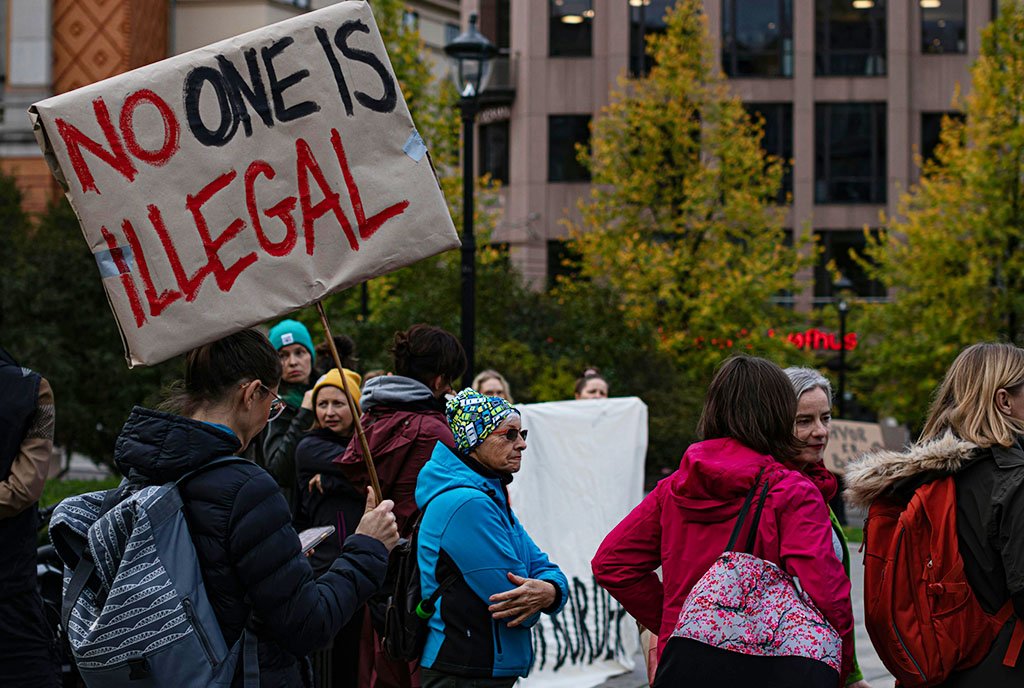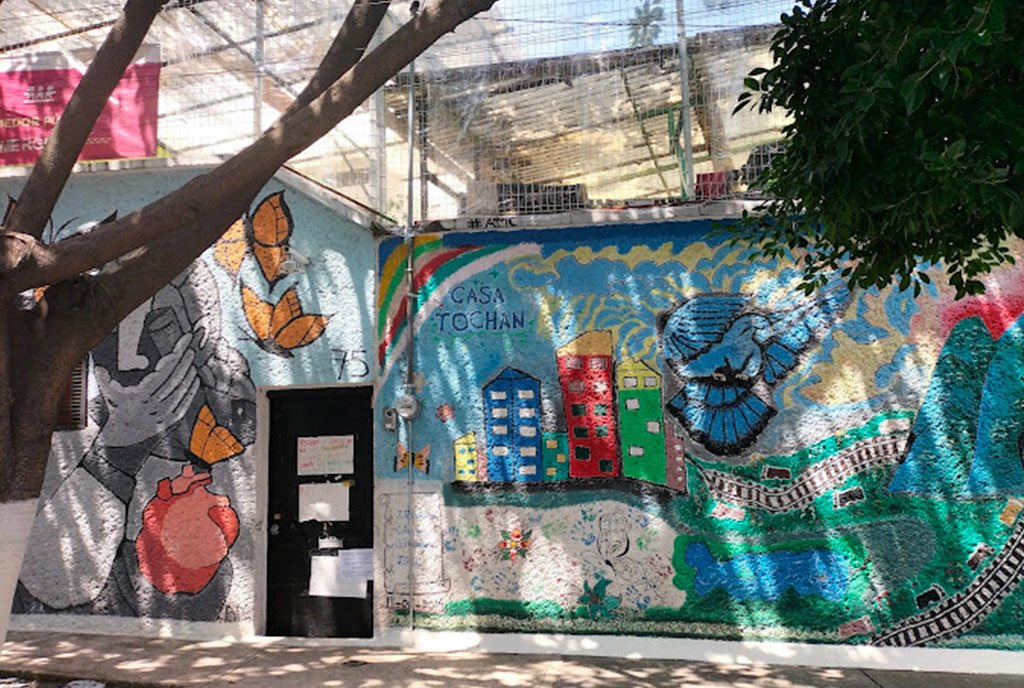
“Historically, pandemics have forced humans to break with the past and imagine their world anew. This one is no different. It is a portal, a gateway between one world and the next.
We can choose to walk through it, dragging the carcasses of our prejudice and hatred, our avarice, our data banks and dead ideas, our dead rivers and smoky skies behind us. Or we can walk through lightly, with little luggage, ready to imagine another world. And ready to fight for it.”
Arundhati Roy, “The pandemic is a portal”
We’ve been through it all—a terrorist attack, a flood, a hurricane, multiple global financial crises, political crises, an uprising against racism and police brutality, and a global pandemic. Time and again, we’ve come together to rebuild our cities, our missions, and our goals for social progress. This time it’s different: we’re not going to go back to what was. We’re going to create what can be. For nonprofit capacity building, this means that this time, we’re going to upbuild.
What upbuilding means
Here’s an example of how upbuilding is different from rebuilding: In the aftermath of a hurricane, where homes are destroyed, rebuilding means that we repair the damage, replace the windows, the roof tiles, the siding, and install a sump pump. We try to get the homes back to the state that they were in before the hurricane.
If we use upbuilding as our frame, we recognize that these homes were built on low-lying land that is now eroding. We see that the median income of people living in those homes was dramatically less than those in higher, more inland properties. We see the difference in the races of people living there. Upbuilding after a hurricane requires us to employ soil preservation techniques, build hurricane resistant homes more inland or upland on land made affordable and accessible, institute measures to address the climate change roots of hurricane frequency and intensity, and ensure that resources distributed to that community are distributed equally to provide access to those who may be marginalized because of age, ability, race, and other factors.
Upbuilding is what happens when infrastructure is defined expansively, centering humans and communities, and with a strong equity, anti-oppressive lens. Upbuilding requires having the willingness and imagination to question why things are the way they are, whether they serve or oppress, and whether they can be done differently. In short, upbuilding means building something new and different as opposed to recovering and going back to “normal.”
Why upbuilding matters
Building something new is important and transformational. Transformation starts with people and moves at the speed of trust.
The call to upbuild centers care, equity, and resourcing in how we approach nonprofit capacity-building. Upbuilding asks us to really care for the humans who make up the nonprofit sector workforce, as well as the humans who benefit from that work. Caring also requires being equitable and anti-oppressive.
Upbuilding requires pivoting away from the way we have traditionally spoken about nonprofit infrastructure investments: we have not centered anti-oppression, equity, dismantling white supremacist norms, racial equity, and materializing (rather than emptily pledging to support) deep love and care for people in how we build up nonprofit capacity. Even when we speak of leadership, only recently has there been an effort to ensure that BIPOC leadership pipelines and support are created and sustained.
Let’s unpack the terminology being used here. Nonprofit infrastructure means the internal management systems, strategies, and processes that support leadership and leadership pipelines, strategy development, talent management, diversity, equity, inclusion and belonging, governance, communications, technology, fundraising and risk management, and financial management. It is vital work that nonprofits need to embrace in order to meet their mission and goals. This is where capacity-builders come in: they are organizations and consultants that support nonprofits to do these things, and to do them well, in service of impact that the nonprofits want to achieve in the world.
Because it’s not readily visible, because it’s internal work, capacity-building often gets sidelined, and it is also dismally resourced. But when times get challenging, there is a dramatic difference between an organization that has strong infrastructure and one that doesn’t: one is resilient, while the other struggles and may even fail. Accordingly, there has been ongoing advocacy urging more investments in nonprofit infrastructure so that we can support nonprofits to be more resilient, stronger, and more impactful, all of which increase in urgency during challenging times.
To date, much of infrastructure spending has replicated systemic oppression itself: a bulk of resources go towards larger nonprofits, rather than the small to mid-size organizations that do most of the work. Support for coaching leaders of organizations on the front lines of that work is inadequate. Leadership and professional development for young BIPOC nonprofit workers is still underfunded. Upbuilding the nonprofit sector today should be understood as enacting a set of capacity-building efforts that are human-centered and dismantle structural racism and oppressive systems.
Furthermore, if the nonprofit capacity-builders themselves don’t reframe their work to focus on people, then they do a disservice to the movement organizations that are leading the charge around our shared social justice goals. Be it climate, racial equity, women’s rights, or immigration, at the heart of every movement is a nonprofit that could benefit from capacity-building, and at the heart of every nonprofit is a human that deserves care (dare I call it “care-pacity” building?). In fact, movements are mobilized by people, in and out of institutions, so we must ensure that capacity-building and resourcing nonprofit infrastructure also entails thinking about who is not in a nonprofit and ensure access for them, too; for example, this includes the activists and volunteers who are often on the leading edges of movements.
That is what upbuilding requires of us.
Cyndi Suarez redefines infrastructure in this vein, in articles advocating for infrastructure efforts to support leaders and the communities they serve, and for the movement goals themselves, as opposed to focusing on nonprofit organizations.
Sign up for our free newsletters
Subscribe to NPQ's newsletters to have our top stories delivered directly to your inbox.
By signing up, you agree to our privacy policy and terms of use, and to receive messages from NPQ and our partners.
In the nonprofit sector, there is tension between what nonprofits do and how the nonprofit itself is organized. In large part, the organizations or institutions that hold the work are built on inherently racist, oppressive structures that are not serving the people doing the work, the movement, or the communities they serve.
For example, why do nonprofits have boards of directors? Because they are incorporated under a state’s corporation law. Nonprofits are created as one kind of corporate entity, under regulatory code that was created to protect assets and limit liability. However, most nonprofits are created in order to be a container to hold people who have come together to solve a problem and to work towards a shared vision of future social justice goals. And so that they can receive philanthropic dollars. Nonprofit staff and leadership often struggle to work with boards of directors who may not share the same values, knowledge, and journey of an organization.
Of course, this is a sweeping statement. Not all boards are the same. However, there exists a very real disconnect between nonprofit boards and the organizations they are tasked with governing. They may have a deep connection to the mission, be excellent fundraisers, support leadership, and help set strategy, but they’re often removed, unaware of the daily truths of the organization and where the field is moving. The disconnect is even starker in organizations that are on their racial equity journey. In most instances, the internal staff are light years ahead of their boards in terms of the work being done and already prioritize building an equitable and inclusive workplace culture. This leads to very real tension.
When you layer on the fact that nonprofit boards are overwhelmingly white, the disparity between racial equity work on the staff and board levels can lead to huge harm. Nonprofit boards are tasked with hiring the leader of that organization, and if they do not have a racial equity lens or analysis, then they risk bringing on a leader whose racial equity values do not match that of the team. The fish rots from the head, the saying goes, so you risk losing the growth and journey that the organization has made by bringing a leader who does not share the same values. This is true for racial equity and other guiding values of the organization.
But why do we need boards? Because we are organized under 501(c)(3) codes. Corporation law. What could be another way for us to come together to do the work? What if, as we emerge from the pandemic and focus on upbuilding, we reorganize as collectives, or as mutual aid societies? Dean Spade has a new book on exactly this topic, and we should all read it.
Do we risk philanthropic dollars? Maybe not—but even if that was at risk, then philanthropy should change. The tax code should change. Revise the tax code to ensure that donors get tax breaks when they give to people directly, to collectives, and to mutual aid societies. Yes, that’s right: revise the internal revenue service tax code. Dismantling these systems and structures is going to be disruptive as hell, but this is what upbuilding contemplates.
After upbuilding
Investing in change, in generational change, requires investment in the infrastructure needs of the nonprofit sector, while at the same time dismantling the legacy of structural racism and oppression that has informed how institutions in the sector are created, managed, and evaluated.
Many communities have never enjoyed “normal”—or more to the point, what has been normal has been oppression and subjugation. For many, decades of disinvestment, hundreds of years of racism, living in systems that were not built for us—and, in fact, were built against us—means that we do not want to go back to what was. This time must be different.
The toll that the pandemic, years of disinvestment, and an entire aeon of racism has exacted on BIPOC communities cannot be overstated. For every dollar moved, an equal dollar in upbuilding is needed. Upbuilding means:
- Investing in people’s leadership and professional development, even if they’re not affiliated with an organization, because the front lines of movements are often in the hands of volunteers and activists.
- Exceeding previous thresholds for capacity-building support by philanthropy; resourcing, with new dollars, the infrastructure needs of the social justice sector.
- Centering small and mid-sized nonprofit organizations and not equating infrastructure investments with support for mergers or consolidations. The pandemic showed the power of small community-based organizations to get the job done. In fact, new organizations were born in the pandemic, and they need investment. Learn about them, support them, trust them.
- Valuing the work of capacity-building, healing, culture, equity, and the people who support others in their journey in this work. This work should be valued, well-resourced, and accessible to all.
- Addressing racism head on, how it impacts the way nonprofits are organized, and how they resource, evaluate, and build up people, institutions, and movements. We can’t hide from the legacy and the journey that racial equity requires of us, even for things that might be considered separate, such as developing a budget or starting a capital project. Values show up in those spaces as well.
- Resourcing people to imagine different ways to come together, thrive, and achieve shared goals in a values-aligned way. This requires many steps, starting with reimagining governance structures that share power and leadership and that promote transparency.
- Changing human resource practices and recentering power, meaning shifting who has voice and resources within the organization. Talent management systems must acknowledge the disparate impacts of race, identity, gender, and sexuality in how it designs its employee lifecycle.
- This includes organizing tests to evaluate the use of more trust-based practices that shift power and authority into the hands of the folks at the front lines. It involves testing shared leadership structures. It requires redesigning technology so that access, literacy, and strategy are intertwined. For example, it’s one thing to give your team laptops, and it’s another to understand and solve for the team members who may not have access to good internet. Upbuilding requires consideration of all those issues as team and organizational capacity are built.
This list is just an offering. It is a start. Upbuilding requires naming and dismantling things that don’t serve the collective good and uplifting things that do. It means committing to not going back to what was and, instead, imagining a different future. Imagination is an evolutionary tool. During challenging times, it can seem like a luxury to imagine. But let’s be liberatory and let’s imagine together what a post-upbuild world looks like.
A post-upbuild world centers equity, empathy, and imagination as part of building up people, communities, organizations, and systems. Social movements require strong infrastructure to thrive. Strong infrastructure means, at its heart: strong, resilient, people. Creating a world of strong, resilient people entails seeing and perceiving the full expression of power of every individual. A post-upbuild world has invested in people, paying particular attention to what different people need to thrive.
In a post-upbuild world, perhaps nonprofits are now all mutual aid societies. People have come together with shared values, vulnerability, and vision in structures and systems that support trust building and equity in how we work together. In this world, people uphold the promises made to each other in service of common values and goals.
A post-upbuild world sees resources being distributed in a manner that acknowledges the systemic oppressions that have held back communities for generations, that acknowledges how wealth was originated and how it is equated with power, and that uses a reparative framework that defers to the grant-seeker rather than the grant-giver.
The small and mighty community-based organization (or mutual aid society) is supported in a post-upbuild reality—over the multi-million-dollar thinktank—because the vision of impact and success has been built on trust in the community and the people most impacted by issues. They know best what solutions resonate for them. And if they say that working with a local community-based organization filled with people they trust is how they will get to sustainable solutions, so be it. Foundations do not judge for themselves in a post-upbuild reality—they listen, they trust, and they fund. Not just pledges but checks.
Nonprofit infrastructure spending is not a term used anymore; in a post-upbuild world, there’s no need to justify this investment. Nonprofits are simply resourced abundantly, and with long-term sustainability goals in mind. It’s just multi-year general operating support, all the time.
Sound utopian? Upbuilding is less utopian than many social justice movement goals, and no less vital. It is clear that there will be no recovery—not on an economic, social, or ethical level—if nonprofits and movement activists do not wholly embrace upbuilding the nonprofit sector through equity-based, human-centered infrastructure investments. This time, let us be bold and upbuild together.












